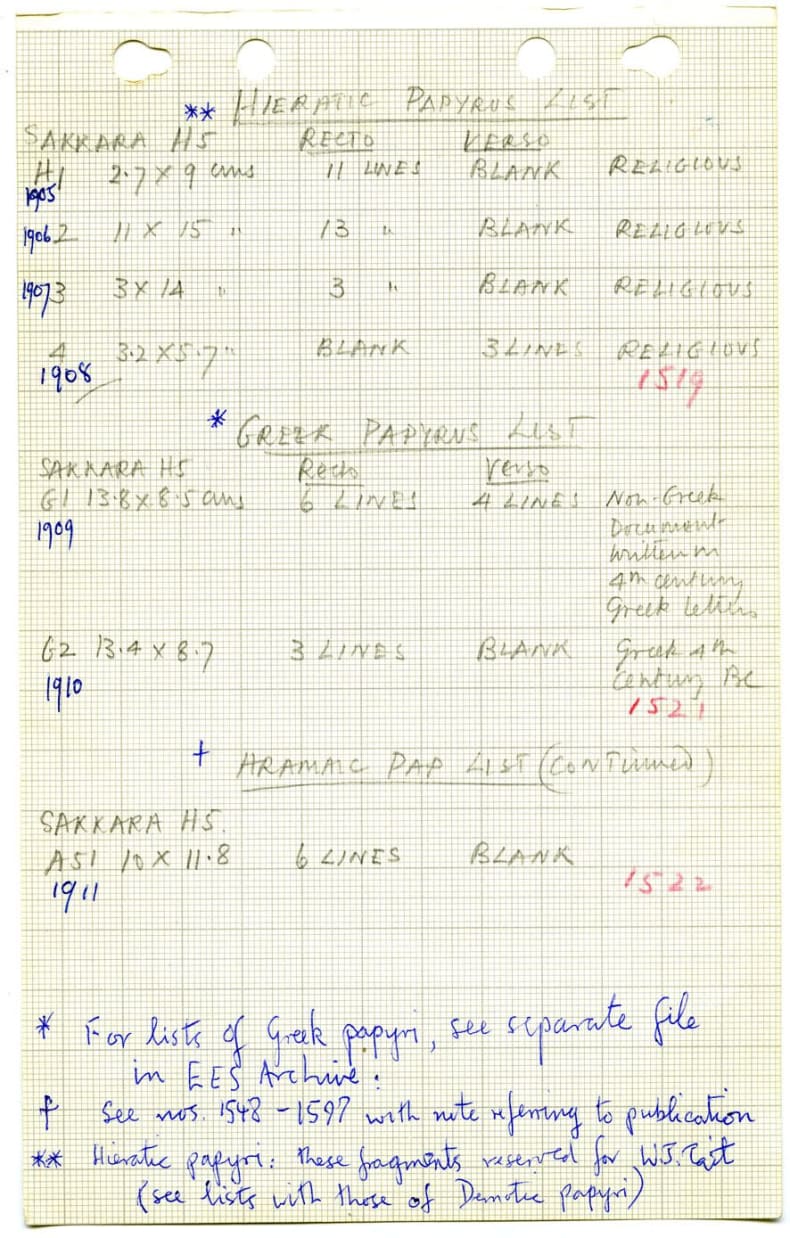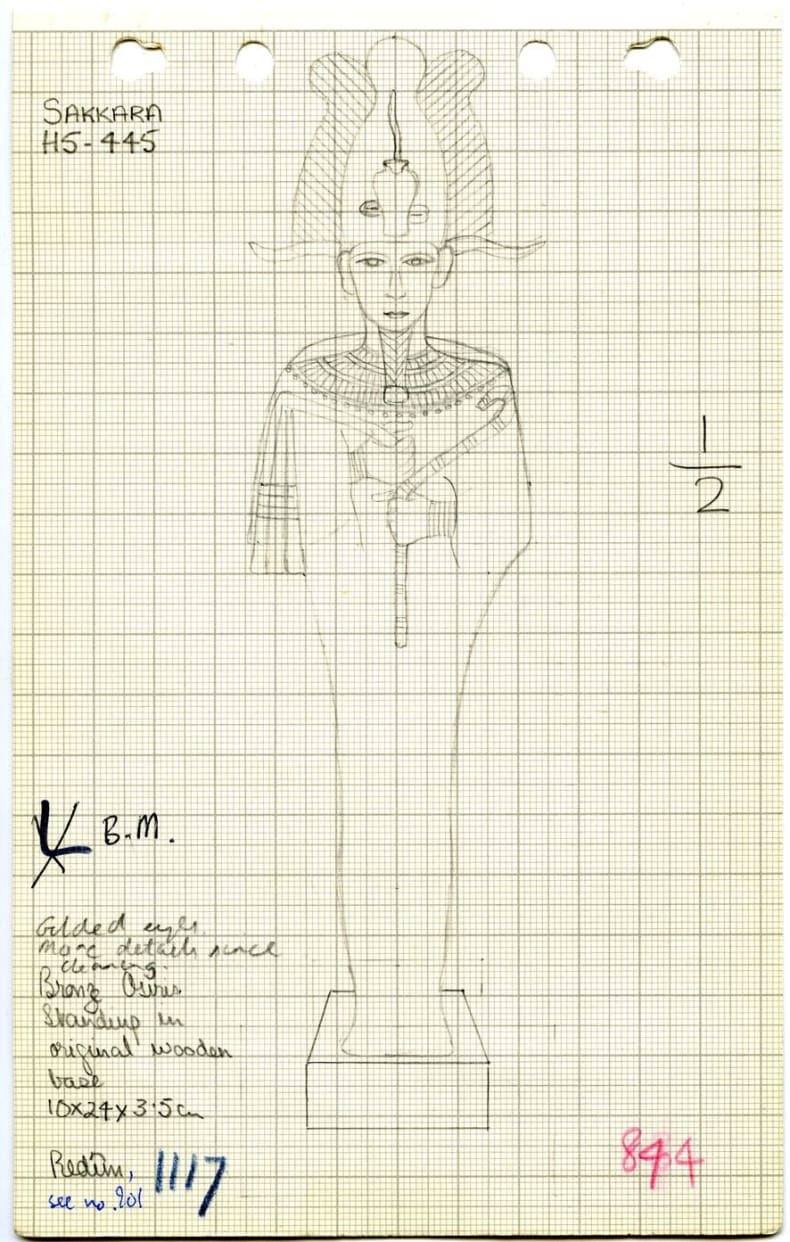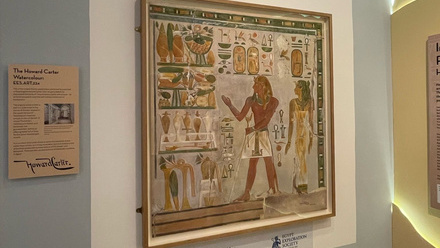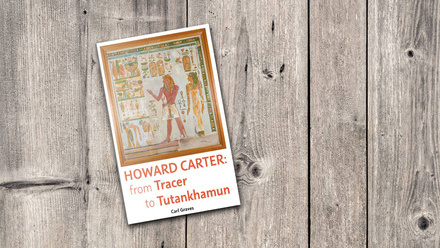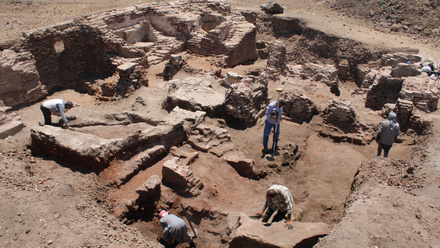Digitising the archive: Object cards from the Sacred Animal Necropolis
by Elizabeth Owen
At the beginning of 2023, a project began in the EES archive to digitise the object cards from the Saqqara Sacred Animal Necropolis (SAQ-SAN) sub-archive so that they can be made available online. Thanks to a private donation, the Egypt Exploration Society was able to employ two interns, Elizabeth Owen and Yu Zhuang, to carry out the work. The following collection highlight aims to introduce this sub-archive and its object cards, of which there are thousands to explore.
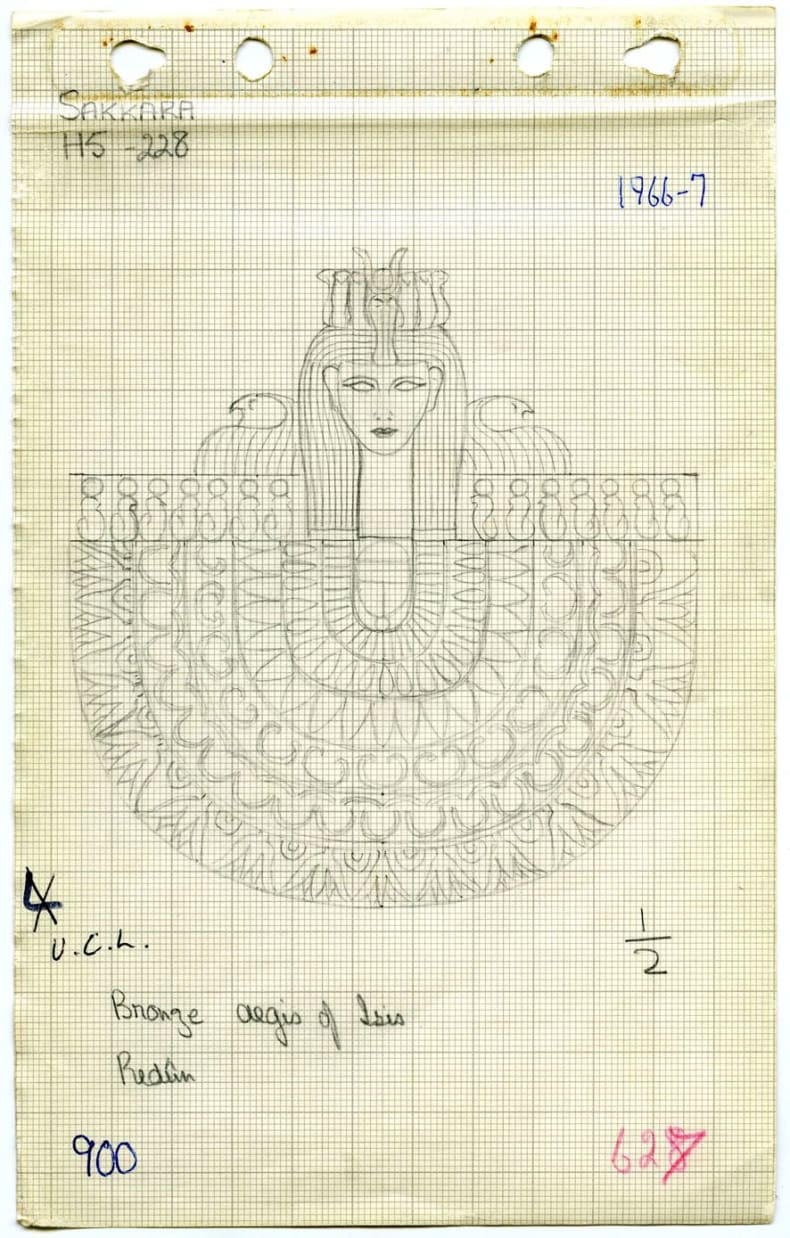
Saqqara Sacred Animal Necropolis Object Card 900 from excavation season 1966-67 (SAQ-SAN.OC.66-67.0900)
The excavations
The Sacred Animal Necropolis at North Saqqara was excavated by the EES from 1964 to 1976. The excavations were directed by Walter Bryan Emery until his death in 1974, after which Geoffrey Martin and Harry Smith took over the directorship. A number of archaeologists and a large Egyptian workforce were also employed.
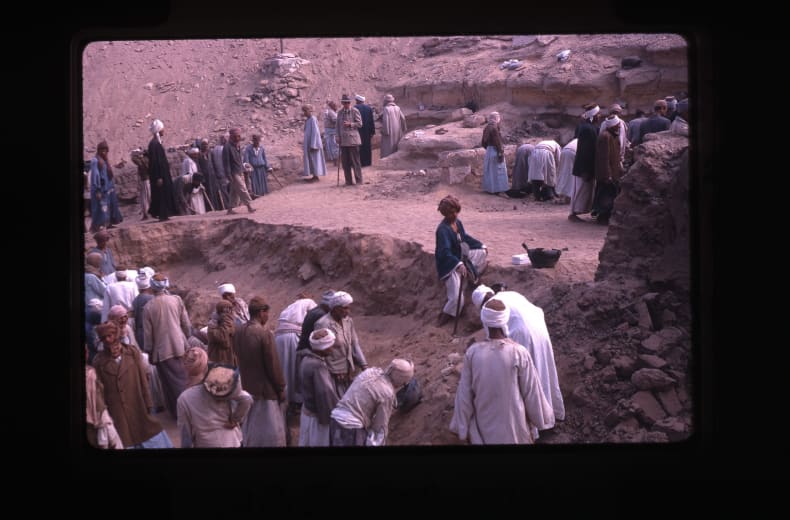
A large Egyptian workforce excavating the Saqqara Sacred Animal Necropolis, directed by Emery (SAQ-SAN.SLI.IS.001)
A detailed overview of the excavations can be found in introductions to the archaeological reports listed below. However, I will give a brief summary of the main discoveries in this article.
During the first two seasons, from 1964-66, the South Ibis Complex and Catacomb were investigated. While tracing a causeway that led up to the South Ibis Complex at the start of the 1966-67 season, the North and West walls of the Northern Enclosure of the Main Temple Complex were identified and their excavation was completed during this season. The Central Temple Enclosure was also discovered during this season. During the 1967-68 season it was further investigated with the hope of finding a catacomb entrance. When none was found, Emery moved back to excavating a previously worked on Christian settlement and found earlier structures underneath. This was continued in the 1968-69 season and led to the discovery of the Baboon Catacomb. During the 1969-70 season, the Southern and Western sections of the Central Temple Enclosure were excavated which led to the discovery of the Falcon Complex. Also during this season, excavations began at the Mother of Apis Catacomb.
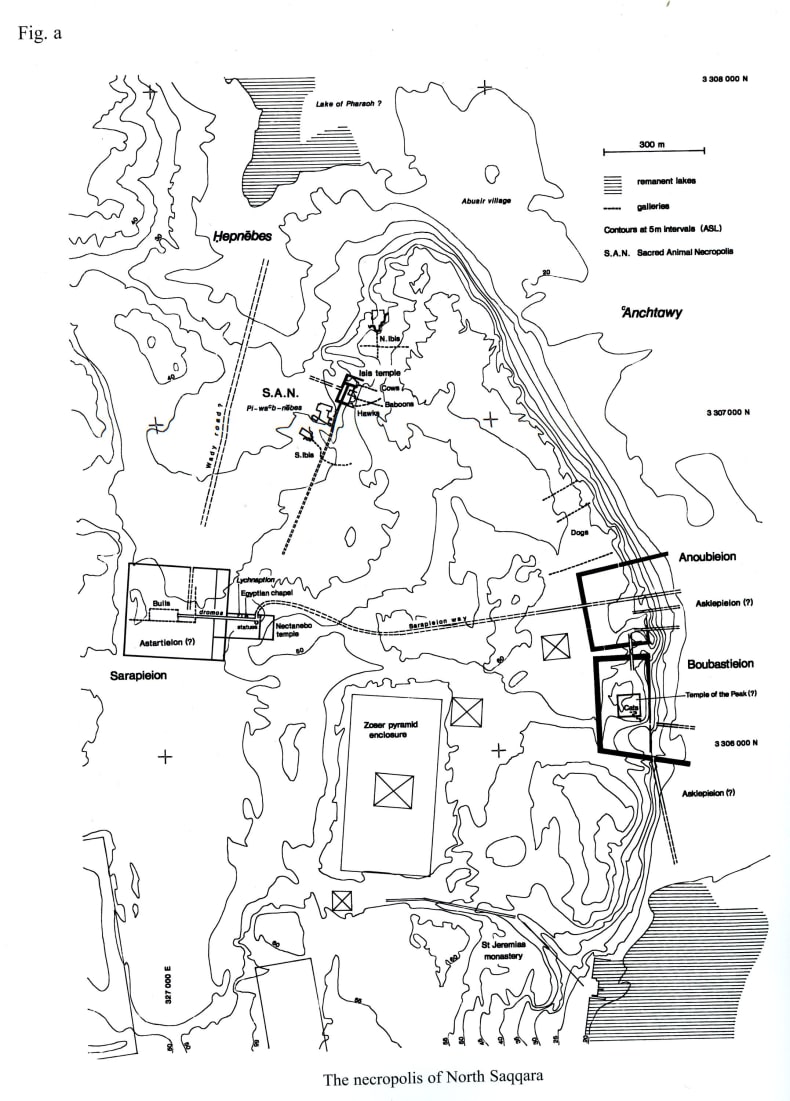
|
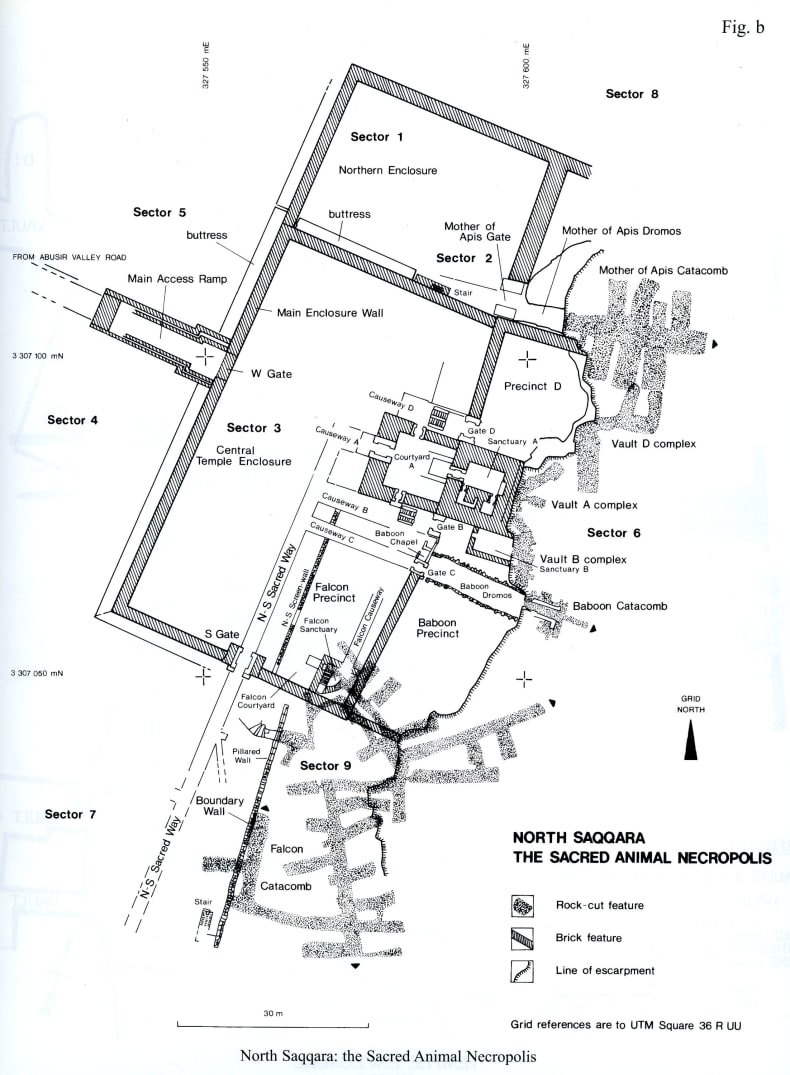
|
Maps of the Saqqara Sacred Animal Necropolis (Davies and Smith 2006b: figs a, b)
A number of the objects excavated were assigned to the EES in a division of finds that happened after each season. They came initially to London and were subsequently distributed among various museums and collections globally. This was done in accordance with the Egyptian government’s Antiquities Law that was in place at the time. The term ‘Sacred Animal Necropolis’ was adopted in 1971 as the best name to describe the site overall; all publications since this date use this name.
Object cards
Two object cards from the 1966-67 season (SAQ-SAN.OC.66-67.1905-1911; SAQ-SAN.OC.66-67.1117)
Each object card gives information regarding a specific object, including how it was recorded and catalogued during its excavation. They feature drawings, photographs, written descriptions about the object and its provenance, as well as information in the form of various numbers that refer to different things. In many instances, they also record where objects ended up if they are now located in a museum.
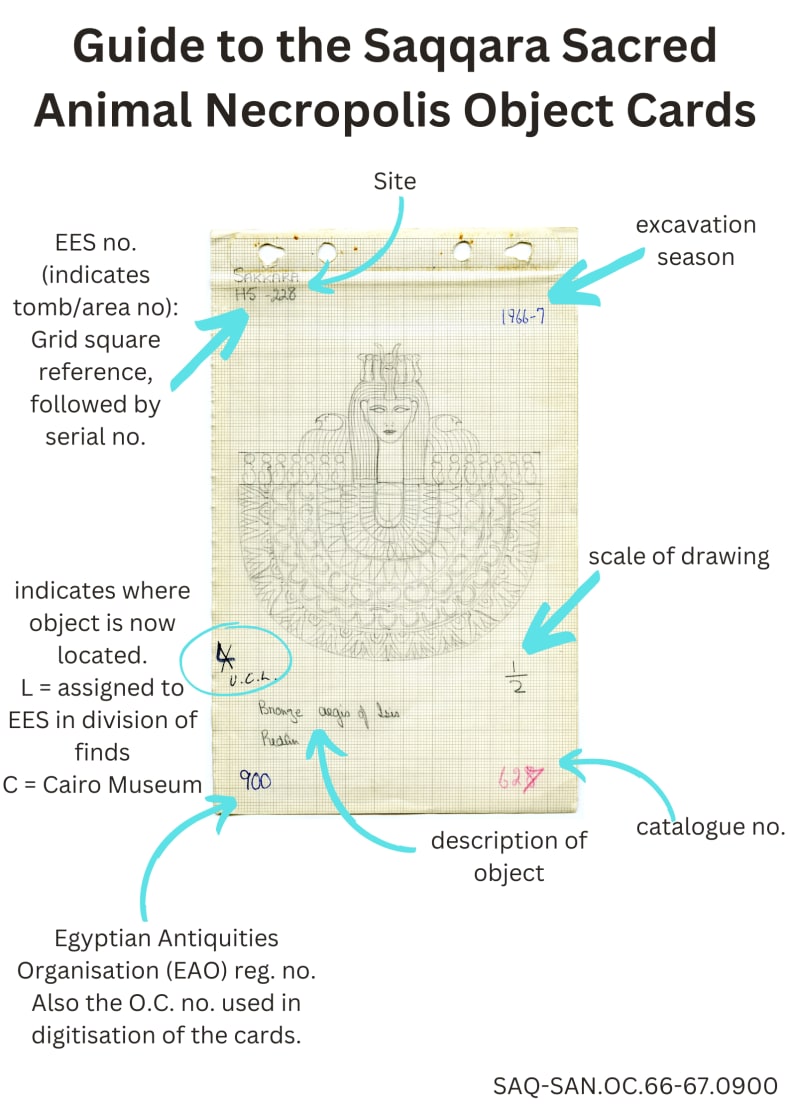
Saqqara Sacred Animal Necropolis Object Card 900 from excavation season 1966-67 (SAQ-SAN.OC.66-67.0900), marked up by E Owen.
The object cards themselves are just one type of archive document from the excavations. Also in this sub-archive are Emery’s day books, which give a day-by-day account of excavations, and the notebooks of other archaeologists working at the site. There were also a number of photographs taken at the time, and these slides are also available to view online.
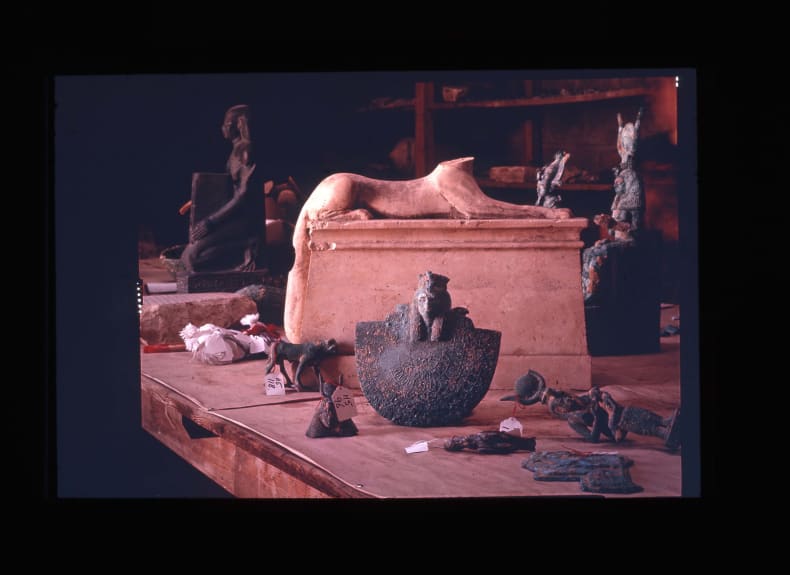
35 mm slide showing a bronze aegis (now in the Petrie Museum), depicted on object card SAQ-SAN.OC.66-67.0900 (SAQ-SAN.SLI.VO.029).
Research potential
Now that the object cards have been scanned and are more accessible, research into the Sacred Animal Necropolis can be more easily informed by the Society's excavations there. The cards can also support research into recontextualising and giving provenance to finds that are now located in museums. The information on the cards can allow for a better reconstruction of the excavation of the objects they record. Overall, archive records have the potential to provide details of each object that are not always easily visible in the excavation publications.
Resources and further reading
The scanned object cards can be found online on the EES Flickr page
35mm slides from the excavations can be found online on the EES Flickr page
Emery published preliminary excavation reports in the Journal of Egyptian Archaeology shortly after each season.
Davies, S. and Smith, H. S. 2005. The Sacred Animal Necropolis at North Saqqara: The Falcon Complex and Catacomb. The Archaeological Report. London.
Davies, S. and Smith, H. S. 2006a. The Sacred Animal Necropolis at North Saqqara: The Mother of Apis and Baboon Catacombs. The Archaeological Report. London.
Davies, S. and Smith, H. S. 2006b. The Sacred Animal Necropolis at North Saqqara: The Main Temple Complex. The Archaeological Report. London.

